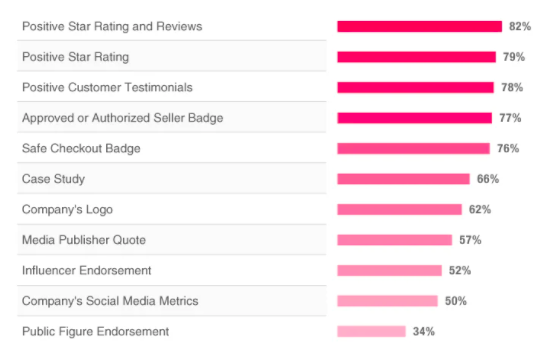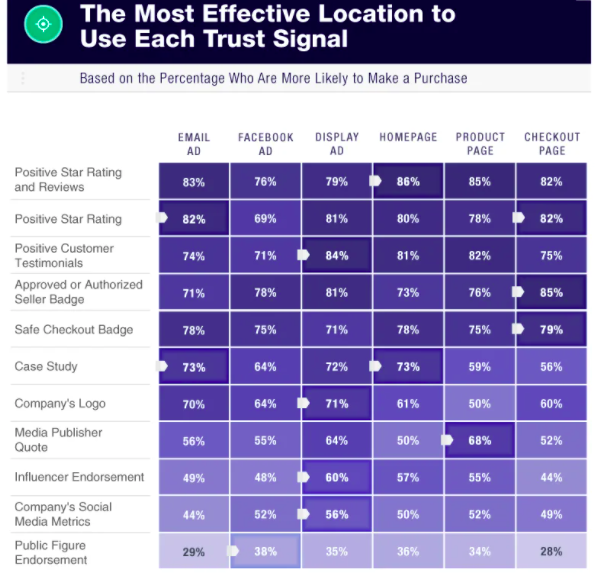The Psychology of Trust: What Are Trust Signals and Why Do They Matter
Every company wants to get a legion of customers who buy and then come back again and again. But, it can be more challenging than it seems. To get loyal customers, you need to build trust, but trust isn’t given freely by consumers.
When it comes to trust, brands need to earn it. All too often, companies assume if there’s a great product or customer service, it’s good enough. That’s not always the case, especially when the consumer can’t tell that for themselves. As a marketer, you can’t always assume that the advertising you’re doing to promote the brand is enough.
So, you have to come up with ways to signal to consumers that they should trust you. One of the best ways to do that is to promote positive trust signals in the form of user-generated content (UGC): ratings and reviews.
Here’s what you need to know about the psychology of trust signals.
What are trust signals?
A trust signal is a catch-all term for specific features you can put on your site or in your emails that signal to consumers for them to trust you. Standard trust signals can include safe check out and approved seller badges or money-back guarantee logos on your site.
But some of the best trust signals are those generated by your best users and customers. These come in the form of positive testimonials, star ratings, and reviews — all great examples of social proof.

In a recent study by Trust Pilot, their research found that positive trust signals, especially social proof, exert a strong influence on consumer behavior. And over 75% of consumers find positive star reviews and ratings and customer testimonials effective.
In other words, if a consumer goes to your site (or reads your email) and sees all sorts of these social proof trust signals, they have higher chances of buying. Trust Pilot found that 66% of consumers are more likely to buy if they see trust signals.
Where social proof can make an impact
The thing about social proof through user-generated content that makes it stand out to consumers is it’s authentic. That’s something really hard for brands to capture and effectively communicate. Consumers know that brands are trying to sell them something, and more often than not, they will tune all your marketing efforts out.
Using UGC like positive reviews, ratings, and testimonials can help break through that stalemate. Consumers are far more likely to look at unbiased reviews and see them as trustworthy and authentic — and that makes them more likely to buy.
So what you need to do is start inserting positive reviews, ratings, and testimonials into your emails.

As you can see from the study in the image above, using ratings, reviews, and testimonials in your emails can directly motivate consumers.
Using trust signals in email
Something else the Trust Pilot highlighted is it can take time to build trust between consumers and a brand, and a big part of that is the brand needs to understand where the consumer is in the buying process.
So keep that in mind as you start creating campaigns that feature more trust signals. A the start of your relationship, when the consumer is just browsing, simple star ratings on products and services, tucked into the email in a content block, can begin to build trust.
However, later, as consumers are really investigating and researching particular products or services, you can take it a step further. Insert case studies and positive testimonials tied to a specific product or service into your emails; that can elevate trust levels even further.
Not to mention, tieing your positive trust signals to your user behavior and interests is a great way to keep your emails personalized. Giving users content that matters to them and speaks to their needs shows that you understand them, and you’re working on building a relationship from your side of things.
That, coupled with your strategically placed trust signals, can go a long way toward getting that next level of trust that every brand wants.
Start incorporating trust signals in your emails
Want to start building more trust? There’s no better time than the present. Start collecting your positive reviews, ratings, and testimonials and build them into your emails.
Grow your business and total sales




